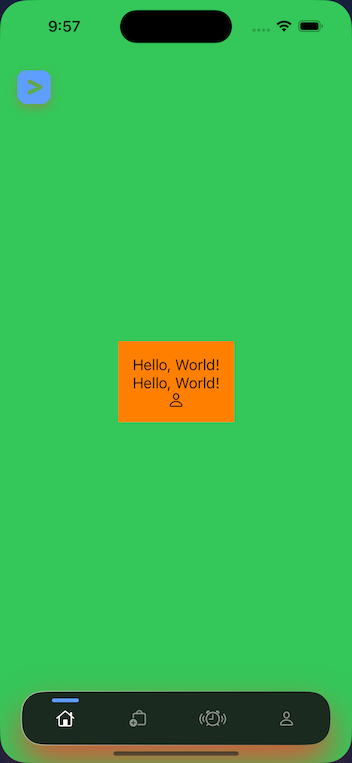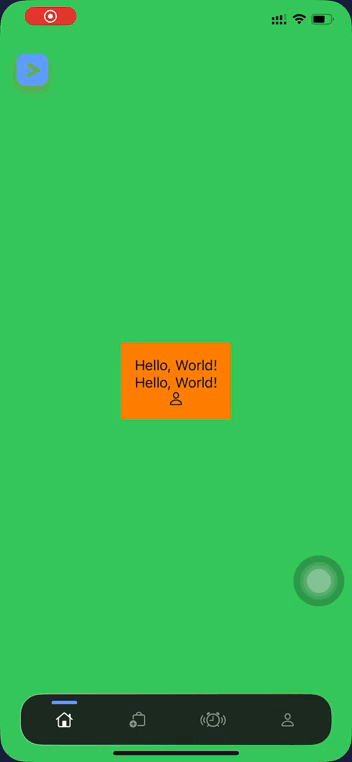1
2
3
4
5
6
7
8
9
10
11
12
13
14
15
16
17
18
19
20
21
22
23
24
25
26
27
28
29
30
31
32
33
34
35
36
37
38
39
40
41
42
43
44
45
46
47
48
49
50
51
52
53
54
55
56
57
58
59
60
61
62
63
64
65
66
67
68
69
70
71
72
73
74
75
76
77
78
79
80
81
|
import SwiftUI
struct TabBarView: View {
@Binding var selectedTab: TabEnum
var safeEdgeInsets: EdgeInsets
var body: some View {
VStack {
Spacer()
HStack {
content
}
.padding(12)
.background(Color(.black).opacity(0.8))
.background(.ultraThinMaterial)
.mask(RoundedRectangle(cornerRadius: 24, style: .continuous))
.shadow(color: .red.opacity(0.8), radius: 20, x: 0, y: 20)
.overlay(
RoundedRectangle(cornerRadius: 24, style: .continuous)
.stroke(.linearGradient(colors: [.white.opacity(0.5), .white.opacity(0)], startPoint: .topLeading, endPoint: .bottomTrailing))
)
.padding(.horizontal, 24)
}
.padding(.bottom, safeEdgeInsets.bottom == 0 ? 20 : safeEdgeInsets.bottom + 10)
}
var content: some View {
ForEach(tabItems) { item in
Button {
withAnimation {
selectedTab = item.tab
}
} label: {
Image(systemName: item.icon)
.frame(height: 36)
.foregroundColor(.white)
.opacity(selectedTab == item.tab ? 1 : 0.5)
.background(
VStack {
RoundedRectangle(cornerRadius: 2)
.fill(Color.accentColor)
.frame(width: selectedTab == item.tab ? 30 : 0, height: 4)
.offset(y: -4)
.opacity(selectedTab == item.tab ? 1 : 0)
Spacer()
}
)
}
// tabBarItem Equal width
.frame(maxWidth: .infinity)
}
}
}
struct TabBarView_Previews: PreviewProvider {
static var previews: some View {
TabBarView(selectedTab: .constant(.home), safeEdgeInsets: EdgeInsets(top: 0, leading: 0, bottom: 0, trailing: 0))
}
}
struct TabItem: Identifiable {
var id = UUID()
var icon: String
var tab: TabEnum
}
var tabItems = [
TabItem(icon: "house", tab: .home),
TabItem(icon: "bag.badge.plus", tab: .tool),
TabItem(icon: "alarm.waves.left.and.right", tab: .timer),
TabItem(icon: "person", tab: .my),
]
enum TabEnum: String {
case home
case tool
case timer
case my
}
|

